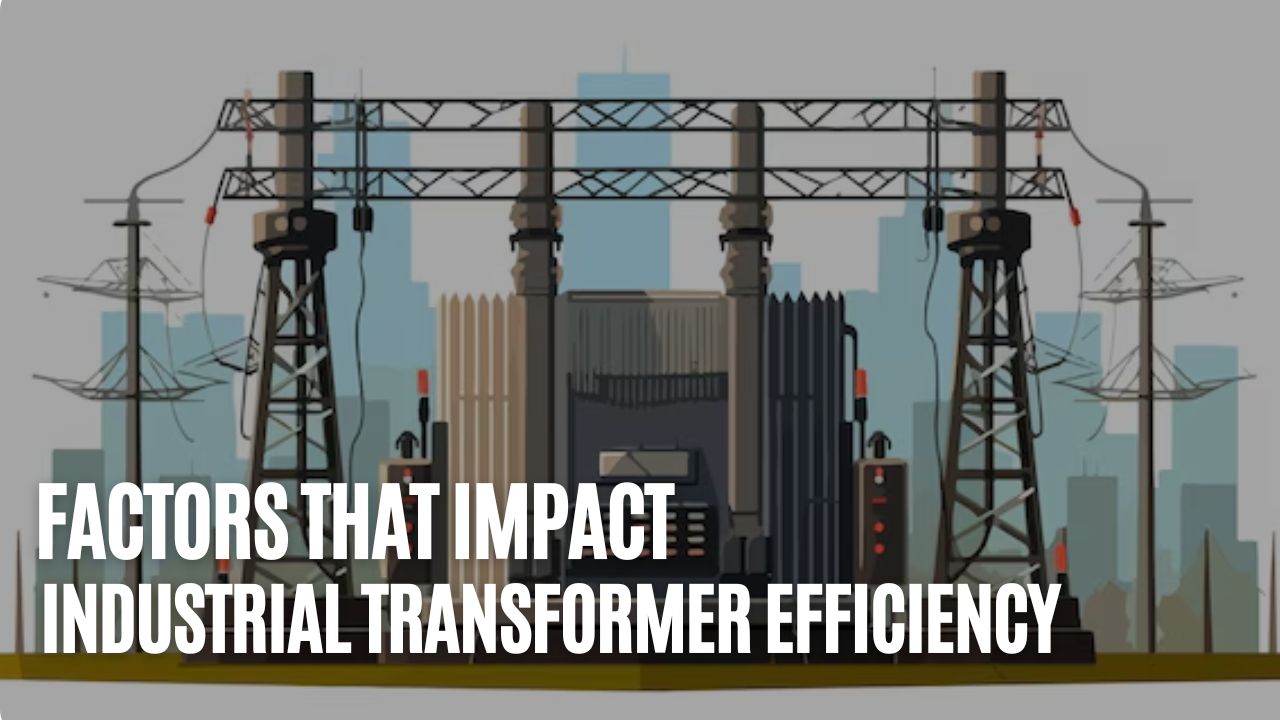Industrial transformer efficiency directly affects operating costs. Every percentage point lost in transformer efficiency translates to thousands in wasted energy expenses.
Plant engineers often focus on equipment efficiency while overlooking transformer losses. These losses accumulate silently, day after day, even when production lines sit idle.
Understanding efficiency factors helps identify improvement opportunities.
Smart choices in transformer selection and operation can significantly reduce these ongoing losses.
Here are five factors that impact industrial transformer efficiency:
Core Material Quality
A transformer's core forms its efficiency foundation, with the choice of material determining base loss levels. While standard silicon steel cores serve basic needs, they lose energy through eddy currents and magnetic hysteresis.
Premium grain-oriented steel offers a significant improvement, aligning its grain structure precisely with magnetic flux paths to minimize losses.
The trade-off comes in material cost and complexity—thinner laminations and advanced amorphous materials demand specialized manufacturing techniques despite their superior efficiency.
This initial material choice shapes the
transformer's performance throughout its entire operational life.
Load Pattern Management
Transformer efficiency fluctuates with load variations throughout each operating cycle. The sweet spot typically is between 40-50% of rated capacity, where core and copper losses balance optimally.
Running too light wastes energy through fixed core losses, while heavy loads generate excessive heat and copper losses.
Smart load management often means rethinking traditional approaches; sometimes multiple smaller transformers working together prove more efficient than a single large unit.
This distributed approach allows better load matching and creates redundancy while maintaining peak efficiency ranges.
Harmonics Control
Modern industrial equipment introduces complex harmonic challenges to transformer operation.
Variable frequency drives and other non-linear loads generate harmonic currents that circulate through transformer windings, creating additional heat and reducing efficiency.
While K-factor rated transformers specifically designed for harmonic loads offer one solution, they represent a significant investment.
A more comprehensive approach combines strategic harmonic filtering with continuous power quality monitoring, identifying and addressing harmonic-related losses before they impact operations.
Maintenance Practices
Efficiency deteriorates gradually without proper maintenance, often unnoticed until energy bills spike.
Contaminated transformer oil not only loses its cooling effectiveness but also increases dielectric losses throughout the system.
Connection points loosen over time, creating hot spots that waste energy and potentially lead to failures.
A proactive
maintenance program, combining regular oil testing with infrared scanning, catches these issues early.
This preventive approach costs far less than dealing with efficiency losses or emergency repairs once problems escalate.
Operating Temperature
Temperature directly affects transformer efficiency, creating a cascade effect as heat builds up.
Each 10-degree rise above optimal operating temperature not only increases immediate losses but also accelerates insulation aging, leading to further efficiency decline.
Effective cooling design considers the entire thermal system, from internal oil circulation paths to external cooling fin arrangement.
While forced
cooling systems consume some power, their strategic use often improves overall system efficiency by maintaining optimal operating temperatures under varying load conditions.
Final Thoughts
Understanding these efficiency factors guides better transformer decisions.
Makpower's manufacturing process emphasizes premium core materials and optimized cooling design.
When maintenance needs arise, our service team restores original efficiency levels through proper cleaning and repair. This comprehensive approach helps industrial facilities minimize energy losses while maintaining reliable power distribution.
For more information,
get in touch with us today.

